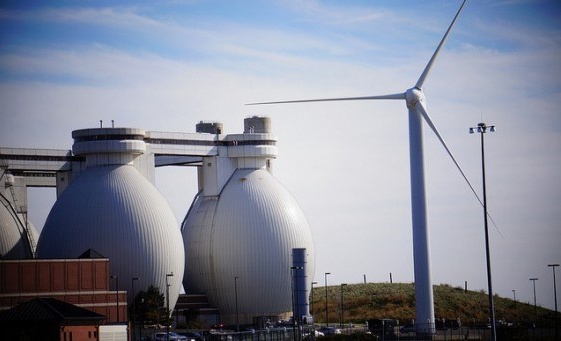
Science-based Emissions Targets: The key to sending a strong corporate signal before COP 21
5th Nov 2015
Have you noticed the growing number of companies speaking up for climate action this year?
In April, 43 CEOs representing companies with operations in more than 150 countries signed a joint letter calling for “governments to take bold action at the Paris climate conference (COP21) in December 2015 to secure a more prosperous world for all of us.”
In early October, 10 CEOs from major food and beverage companies released a joint letter to U.S. and global leaders explaining that “Climate change is bad for farmers and for agriculture.” They asked leaders “to embrace the opportunity presented to you in Paris, and to come back with a sound agreement, properly financed, that can affect real change.”
And most recently, the White House announced that 81 companies representing more than $3 trillion in annual revenue signed the American Business Act on Climate Pledge “to demonstrate their support for action on climate change and the conclusion of a climate change agreement in Paris that takes a strong step forward toward a low-carbon, sustainable future.”
In total, more than 100 major companies have loudly, explicitly and powerfully asked world leaders to reach a meaningful climate deal. But do their own emissions goals echo their message?
Last year, 80 percent of the world’s 500 largest companies publicly reported their emissions-reduction goals.
However, the majority of these greenhouse gas reduction targets are still not ambitious enough to align with the global effort to keep warming below 2°C, the temperature limit scientists say is necessary to prevent some of the most disastrous consequences of climate change. As Marc Gunther from The Guardian cynically commented: “Companies get to pick the baseline year from which they will make reductions, and decide for themselves whether they will cut 5 percent, 10 percent, 20 percent or 50 percent, and by when. It’s a game where all the players get to set their own rules.”
Setting Science-Based Emissions-Reduction Targets
Science-based emissions targets solve this problem, and should be the foundation of corporate climate action. Using methods based on the latest climate science, companies can now determine how much to cut emissions in order to support the 2°C global goal. Companies have some flexibility, but science-based targets still prove that the company is serious about fighting climate change and about supporting an ambitious international climate agreement.
Nearly 90 companies have already committed to setting such targets through the Science Based Targets initiative, a joint effort of CDP, the UN Global Compact, WWF and WRI. Our goal is to get 100 companies on board by COP21. Companies can visit this webpage to find resources and guidance on how to join.
Businesses involved in the initiative will join the ranks of corporations like Coca Cola Enterprises, which committed to cut emissions from its operations 50 percent below 2007 levels by 2020 and General Mills, which is targeting a 28 percent decrease across their full value chain from 2010 levels by 2025.
Science-Based Emissions Targets Make Good Economic Sense
The business case for science-based target setting is clear. Getting a head start in the transition to the low-carbon economy will give most companies a long-term competitive edge, with compelling medium-term cost savings. The 3% Solution Report shows that by setting science-based targets, the U.S. corporate sector alone would generate cumulative savings of up to $780 billion by 2020. Furthermore, data reported to CDP shows that companies with published emissions-reduction targets delivered a better return on invested capital over a 12-month period than those without targets.
A Strong Agreement in Paris Will Help Business
A strong international climate deal in Paris – and the domestic policies that will cascade from that deal – can level the playing field, making it significantly easier for more companies to make low-carbon investments and realize benefits. A new report from WRI explains that “Clear and predictable policy signals from the international community, and from national governments implementing the agreement, provide essential direction for decision-making on assets, investments and business strategies.”
The most powerful message companies can send to the international community in the weeks before COP21 is to publicly commit to setting a science-based target. Companies that make this commitment are asserting that they recognize the economic benefits of aligning with climate science and are capable of making the transition to a safe and equitable low-carbon future.
During the Caring for Climate Business Forum, the cornerstone event for businesses at COP21, the Science Based Targets initiative will release an updated list of company participants. Companies that join now will be a part of this announcement and help to make it an impactful moment for corporate climate action.
4 Resources to Make Your Voice Heard before Paris
Companies can send a powerful message to world leaders ahead of COP21 by committing to align corporate emissions goals with climate science. Business leaders can use the following resources to get started:
- Read about the Call to Action campaign and how to join.
- Join our webinar on November 10 (or watch the recording of a past webinar).
- Review the methods for science-based target setting.
- Participate at the Caring for Climate Business Forum December 7-8 at Le Bourget, Paris, hosted by UN Global Compact, UNEP and UNFCCC secretariat in cooperation with the French COP21/CMP11 incoming-Presidency.



